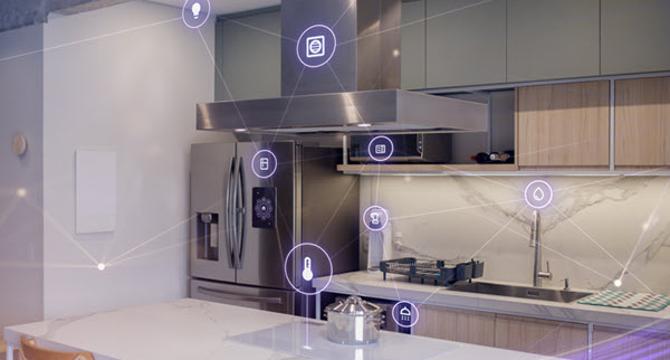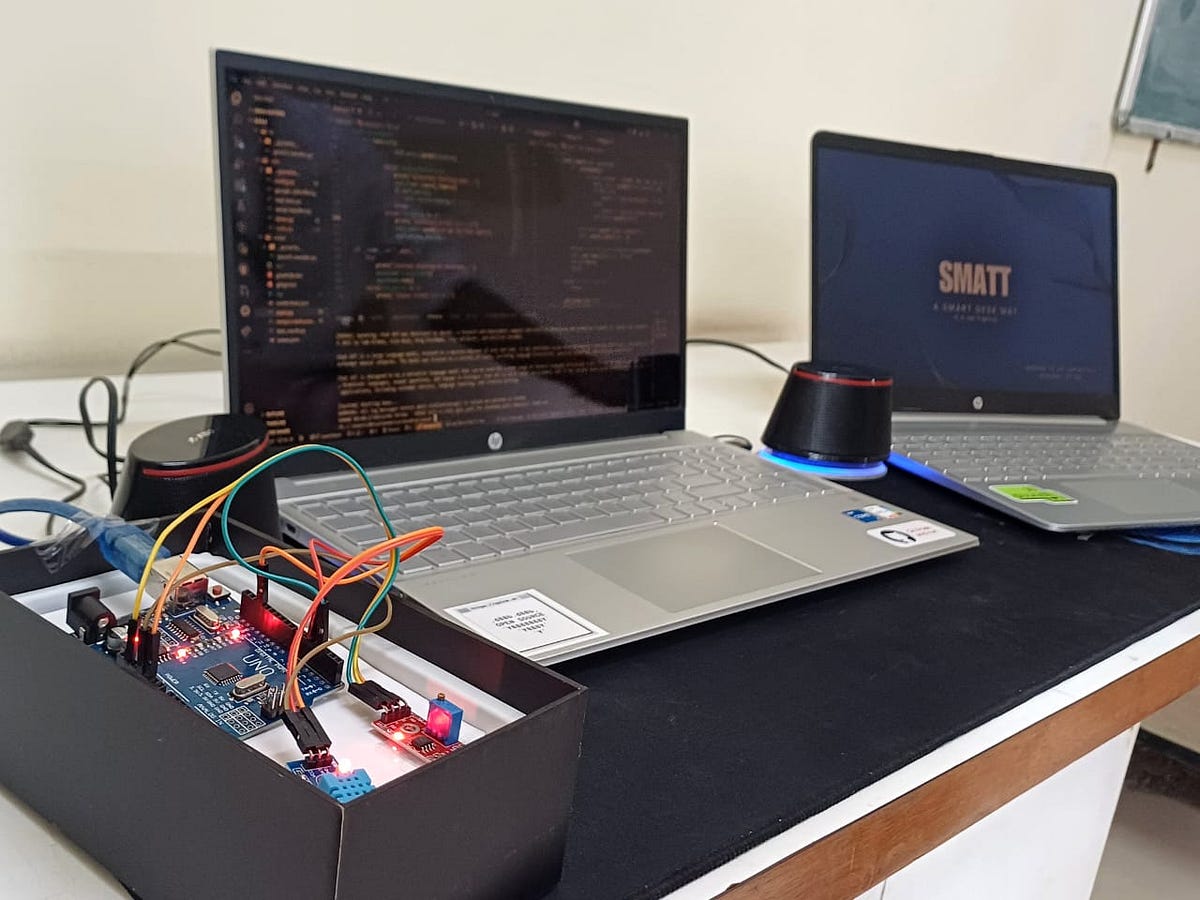IOT News
Perficient
13

Image Credit: Perficient
Azure IoT Operations: Empowering the Future of Connectivity and Automation
- The Internet of Things (IoT) is revolutionizing industries with connectivity and automation, powered by Microsoft Azure's cloud computing platform.
- Azure IoT simplifies and optimizes IoT workflows, offering tools for secure device connectivity, monitoring, and data-driven insights.
- Key reasons Azure is chosen for IoT operations include scalability, robust security measures, data analytics tools, integration with Microsoft services, and cross-platform compatibility.
- Azure IoT Hub enables secure communication between devices and the cloud, Azure Digital Twins creates digital models for visualization and analysis, and Azure IoT Edge supports local data processing.
- Azure IoT Central simplifies IoT application deployment and management, while Azure Time Series Insights handles large volumes of time-series data for analytics.
- By integrating AI and ML, Azure IoT enables predictive maintenance, smart automation, and energy management to optimize operations.
- Azure IoT is a leading choice for businesses seeking to leverage IoT for efficiency, enhanced customer experiences, and new revenue streams.
- With Azure IoT, companies can connect devices, analyze real-time data, and make data-driven decisions that improve their bottom line.
- Azure IoT's scalability, security, and integration with Microsoft tools position it as a valuable asset in the rapidly evolving IoT landscape.
- As IoT advancements continue, Azure remains poised to drive innovation and competitiveness in the connected world.
- By offering powerful cloud infrastructure and end-to-end solutions, Azure empowers businesses to succeed in the realm of connected technology.
Read Full Article
Like
Medium
86

Image Credit: Medium
SMATT — a Smart AI-Powered Desk Mat to Boost Productivity
- SMATT is a Smart AI-Powered Desk Mat that combines AI, IoT, and hands-free automation for a more intelligent and productive workspace.
- SMATT functions as a personal desk assistant that listens to voice commands and responds using text-to-speech.
- It can handle open-ended queries, access Google Calendar API for tasks, and provide context-aware suggestions based on ambient temperature and humidity.
- The SerialManager component listens to data from an Arduino connected over USB, waking the assistant when a sensor is touched.
Read Full Article
5 Likes
TechBullion
155

Image Credit: TechBullion
The Role of AI in Predictive Maintenance: Transforming Equipment Reliability and Operational Efficiency
- Artificial Intelligence (AI) is transforming equipment reliability and operational efficiency through predictive maintenance (PdM), which forecasts equipment failures before they occur.
- Unlike traditional reactive or preventive maintenance, predictive maintenance uses real-time data and AI analytics to predict failures accurately, reducing costs and improving efficiency.
- Machine Learning (ML) algorithms play a vital role by learning from data patterns and detecting anomalies, making AI-driven systems more reliable over time.
- IoT devices and sensors monitor machine parameters and provide real-time data to AI systems, enhancing decision-making based on empirical evidence.
- Cloud computing platforms offer scalability for handling massive sensor data and centralizing analytics, leading to improved decision-making and operational consistency.
- Benefits of AI-driven predictive maintenance include decreased equipment downtime, optimized maintenance schedules, worker safety, extended equipment life, and data-backed actionable insights.
- Challenges in adopting AI for predictive maintenance include data quality, initial investments, training maintenance teams, and overcoming resistance to change.
- Future advancements in AI for predictive maintenance may include autonomous systems, digital twins, edge computing, and AR-powered guidance for technicians.
- Investing in AI-powered predictive maintenance now can lead to long-term competitiveness and resilience for businesses, with AI set to play an even larger role in industry operations.
Read Full Article
9 Likes
TechBullion
173

Image Credit: TechBullion
Smart Manufacturing: Integrating IoT in Production for Next-Generation Efficiency
- Smart manufacturing, driven by digital technologies like IoT, revolutionizes production efficiency and adaptability.
- IoT in manufacturing enables real-time data collection, predictive maintenance, and enhanced quality control processes.
- Benefits of IoT integration include automation of tasks, predictive maintenance, improved quality control, and enhanced resource management.
- IoT impacts various manufacturing phases, from production monitoring to supply chain visibility and workplace safety.
- Challenges of IoT integration include data security, upfront investment costs, data management, and complexity in integrating legacy systems.
- Strategic approaches for successful IoT integration involve pilot projects, employee training, partnerships with solution providers, and robust cybersecurity measures.
- Future trends in IoT integration include advancements in AI, machine learning, and Industry 5.0, emphasizing human-machine collaboration for personalized manufacturing.
- IoT integration is crucial for manufacturers to stay competitive, drive innovation, and achieve sustainability goals in the digital era.
- Embracing IoT in manufacturing offers benefits like efficiency improvement, downtime reduction, enhanced product quality, and safety enhancements.
- Early adoption of IoT in smart manufacturing sets the stage for future readiness and industry leadership.
- Smart manufacturing with IoT paves the way for a more efficient, sustainable, and innovative manufacturing landscape.
Read Full Article
10 Likes
Discover more
Dev
278

Image Credit: Dev
The Network Layer: The GPS of the Internet (With More Drama Than Your Road Trip)
- The Network Layer, similar to a GPS, ensures data packets are routed efficiently on the internet to prevent getting lost.
- Data travels using Circuit Switching (dedicated path) or Packet Switching (flexible routes), akin to taking a private Uber vs. sending postcards on a road trip.
- IP Addresses like IPv4 (limited) and IPv6 (infinite) identify devices on networks, and protocols like ARP and DHCP manage address assignments.
- The Network Layer is crucial for seamless data transmission, analogous to a vigilant mom on a road trip ensuring everyone and everything reaches its destination.
Read Full Article
16 Likes
Medium
365

Image Credit: Medium
Big Ideas, Tiny Screen Realities
- Designing smartwatch apps requires maximizing impact with limited screen real estate.
- Smartwatch features should be unique, context-aware, and feel like superpowers on the wrist.
- Utilize rapid prototyping tools to bring innovative smartwatch app ideas to life quickly.
- Designing for smartwatches is about creating magical user experiences in compact moments.
Read Full Article
21 Likes
Semiengineering
264

Image Credit: Semiengineering
Energy-Aware DL: The Interplay Between NN Efficiency And Hardware Constraints (Imperial College London, Cambridge)
- A technical paper titled “Energy-Aware Deep Learning on Resource-Constrained Hardware” was published by researchers at Imperial College London and University of Cambridge.
- The paper discusses the utilization of deep learning on IoT and mobile devices as a more energy-efficient alternative to cloud-based processing, highlighting the importance of energy-aware approaches due to device energy constraints.
- The overview in the paper outlines methodologies for optimizing DL inference and training on resource-constrained devices, focusing on energy consumption implications, system-level efficiency, and limitations in terms of network types, hardware platforms, and application scenarios.
- Authors of the paper are Josh Millar, Hamed Haddadi, and Anil Madhavapeddy, and it is published on arXiv under the code 2505.12523, dated May 2025.
Read Full Article
15 Likes
Dev
100

Image Credit: Dev
IOT: How to Capture all Log Files from Systems, Applications & Sensors
- Fluent Bit is a tool for logfile aggregation, processing, and storing, ideal for an IOT context due to its flexible plugin architecture and small footprint.
- This article explains configuring Fluent Bit to gather logfiles in an extended IOT environment, including capturing log files from systems, Docker containers, other systems, and IOT devices like ESPHome and Home Assistant.
- Different types of log files in an IOT environment include system logs, external system logs, IOT application logs, and sensor logs.
- Fluent Bit needs to be configured to tail system log files and mount them to the Fluent Bit container for capturing host system logs.
- For external system logs, Fluent Bit can listen to syslog messages over UDP on port 514 to capture logs from other computers and appliances in the network.
- IOT application logs from Docker containers can be captured by configuring Fluent Bit as the logfile driver for the containers and ensuring they share the same network.
- Capturing sensor logs from devices configured with ESPHome involves using MQTT messages for log output and configuring Fluent Bit to listen to these messages.
- Logfile visualization can be done through tools like Grafana and Chronograf, offering features like filtering logs, extracting fields, visualizing log counts, and more.
- Grafana allows filtering logs for specific origins and visualizing log counts per timespan or keyword, while Chronograf's log viewer may have limitations in handling structured log data.
- Overall, systematic logfile aggregation in an IOT network using tools like Fluent Bit and visualization tools helps in processing and analyzing log data effectively for monitoring and troubleshooting.
Read Full Article
6 Likes
Embedded
353

SECO’s Clea Now Natively Supported on Raspberry Pi OS, Advancing Industrial IoT Integration
- SECO’s Clea platform is now fully integrated into Raspberry Pi OS, advancing industrial IoT integration.
- The partnership between SECO and Raspberry Pi enables simplified integration workflows for industrial developers and system integrators, enhancing innovation in key verticals.
- The Clea software suite by SECO, known for data-centric IoT solutions and edge AI applications, is now natively supported on Raspberry Pi OS, expanding its reach and empowering partners to develop IIoT systems.
- This development builds upon the success of SECO’s Pi Vision 10.1 CM5, an industrial-grade HMI utilizing the Clea-Raspberry Pi ecosystem to offer actionable operational insights in harsh environments.
Read Full Article
21 Likes
Bigdataanalyticsnews
344

Image Credit: Bigdataanalyticsnews
How to Enable Remote Access on Windows 10 [Allow RDP]
- Remote Desktop Protocol (RDP) is essential for remote connections to Windows 10 PCs.
- Enabling remote access on Windows 10 can be done via System Settings, Command Prompt, PowerShell, or Group Policy.
- Using RDP allows for managing infrastructure, running apps remotely, or accessing work PCs securely.
- Enabling RDP through Windows Settings is straightforward for Windows 10 Pro, Enterprise, or Education users.
- Involves activating Remote Desktop Protocol, configuring network settings, and allowing access through Windows Firewall.
- Control Panel method offers a GUI-based approach to enable RDP, ideal for local system management.
- PowerShell allows precise and automated activation of RDP for advanced users and IT professionals.
- Group Policy method is expert-level for centralized control over multiple systems in enterprise environments.
- Security best practices include strong passwords, limited access, monitoring sessions, and using a VPN for enhanced security.
- Troubleshooting common issues like firewall blocks and user permissions is crucial for successful remote desktop connections.
Read Full Article
20 Likes
Bigdataanalyticsnews
247

Image Credit: Bigdataanalyticsnews
AI Agent Architecture: Revolutionizing Intelligent Automation in 2025
- AI agents play a crucial role in businesses across industries, relying on evolving architecture for autonomous operations and decision-making.
- AI agent architecture encompasses key components like perception modules, decision engines, action modules, communication protocols, and security frameworks.
- These agents automate processes in customer service, finance, healthcare, and supply chain management, enhancing efficiency and decision-making.
- Trends in AI agent architecture include Event-Driven Architecture, Edge Computing, Federated Learning, and Composable Systems for improved scalability and privacy.
- Implementing AI agent architecture involves identifying use cases, selecting appropriate tools, developing modular architecture, and thorough testing before deployment.
- Challenges in AI agent architecture include data quality, integration with legacy systems, and ethical/legal compliance regarding data privacy and decision-making.
- AI agents are designed to complement human efforts, automating repetitive tasks to enhance productivity and allow humans to focus on strategic functions.
- Interaction with other systems is facilitated through APIs and communication protocols, ensuring seamless integration and data exchange.
- Businesses can scale AI agent architecture by leveraging cloud platforms, edge computing, and modular designs for dynamic expansion.
- AI Agent Architecture continues to drive innovation, reshaping automation with the latest technologies and trends for improved efficiency and cost reduction.
Read Full Article
14 Likes
Bigdataanalyticsnews
13

Image Credit: Bigdataanalyticsnews
Transformer Models for Code Translation: Modernizing Legacy Applications with Gen AI
- Legacy applications hinder business agility and require modernization for efficiency in today's market.
- Legacy code poses security risks, scalability issues, and innovation challenges.
- Transformer models for code translation offer solutions to modernize legacy systems.
- Security risks in legacy systems stem from outdated languages and frameworks, making them vulnerable to cyberattacks.
- Transformer models eliminate insecure dependencies, enforce encryption standards, and ensure compliance.
- Scalability issues in legacy code can be addressed by translating into modern languages supporting cloud integration.
- Innovation paralysis due to legacy maintenance can be overcome by automating code translation with transformers.
- Transformer models are effective in context-aware translation, learning from large codebases, and handling complexity.
- Transformers accelerate code translation, ensuring accuracy and adherence to modern standards in a scalable manner.
- AI-powered modernization using transformers aids in speed, cost efficiency, and futureproofing systems.
Read Full Article
Like
Dzone
100

Image Credit: Dzone
Understanding IEEE 802.11(Wi-Fi) Encryption and Authentication: Write Your Own Custom Packet Sniffer
- IEEE 802.11 standards include WEP, WPA, WPA2, and WPA3 for Wi-Fi security, with various encryption and authentication methods.
- WEP uses a static key for encryption, making it vulnerable. WPA improved security by using Temporal Key Integrity Protocol (TKIP).
- WPA2 utilizes AES for encryption, offering stronger protection than WPA. WPA3 enhances security with AES-128/192 and SAE for authentication.
- Different authentication methods like PSK and EAP are supported for personal and enterprise networks under WPA, WPA2, and WPA3.
- IEEE 802.11 MAC frame header structure includes Frame Control, Address fields, and Frame Body containing Information Elements.
- Management frames like Beacon, Authentication, Association, Probe, and others are used for establishing and maintaining wireless network connections.
- Information Elements (IEs) in Beacon frames convey network data like SSID, supported rates, encryption, and authentication details.
- A custom packet sniffer written in C using libpcap can capture Wi-Fi management frames like Beacon and extract RSN Information Elements.
- Wireshark, a popular packet sniffing tool, allows inspection of Wi-Fi frames to identify encryption and authentication methods used by nearby networks.
- By analyzing the RSN IE in Beacon frames, one can determine the encryption (cipher suite) and authentication (AKM suite) settings of the network.
- Understanding IEEE 802.11 security standards, MAC frame structure, Wi-Fi frame types, and packet sniffing techniques provides insights into securing wireless networks.
Read Full Article
6 Likes
Dev
431

Image Credit: Dev
When to Choose NoSQL over SQL: A Simple Use Case Primer
- NoSQL is preferable for flexible schemas, massive horizontal scale, and unstructured data.
- Relational databases excel at ACID transactions, joins, and mature tooling.
- NoSQL, like document stores, excels in modern workloads, such as IoT telemetry, due to schema flexibility and scaling.
- Choose NoSQL for evolving schema, high-velocity writes, geographically distributed scale, and unstructured data.
Read Full Article
25 Likes
Securitysales
238

Image Credit: Securitysales
Mercury Security Showcases Open Architecture Embedded Application Environment
- Mercury Security showcased a new addition to its controller platform, the Mercury embedded application environment, at ISC West 2025.
- The embedded application environment is an open platform that allows technology partners and OEMs to develop and deploy custom applications directly on Mercury MP Controllers.
- This platform brings real-time logic processing to the edge, improving system responsiveness, minimizing network dependency, and simplifying interoperability.
- Mercury Security collaborated with companies like ASSA ABLOY, HID, SecuriThings, and Viakoo to showcase the capabilities of its embedded application environment at ISC West 2025.
Read Full Article
14 Likes
For uninterrupted reading, download the app